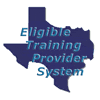Non-Destructive Testing Certification
An "ISO 9001-2015 Certified" Company
NDT Certification of all levels of Non-Destructive Testing personnel is the responsibility of their employer or other agency to meet certain qualifications, which are established by the industry. This shall be based on the demonstration of satisfactory qualification as described in the employer’s written practice. Certification is a process of providing written testimony that an individual is qualified to do certain work.
At the option of the employer, an outside agency may be engaged to provide NDT Level III services. In such instances, the responsibility of certification of the employees shall be retained by the employer.
The qualifications of an individual are based on education, the level of training, work experience, and the ability to pass a near vision acuity and color contrast differentiation test. NDT certification is very important for NDT personnel working in the field, are often making critical judgments that can have safety and/or significant financial consequences. NDT personnel must have a great deal of confidence in the results of their work. Since many of the NDT methods do not produce a record of the inspection results, certification presents objective evidence of the knowledge and skill level of the individual performing an inspection.
Personnel records shall be maintained on file by the employer for the duration specified in the employer’s written practice.
Candidate for certification in NDT Method should have sufficient following to ensure qualification in those NDT methods in which they are being considered for certification.
Education
Training
Experience
Examination
Vision Test
Documentation of prior certification may be used by an employer as evidence of qualification for comparable levels of certification.
NDT Methods
NDT Certification can be obtained in the number of methods, which are listed in the table below.
| METHOD |
ABBREVIATION |
| Acoustic Emission Testing |
AE |
| Electromagnetic Testing |
ET |
| Leak Testing |
LT |
| Liquid Penetrant Testing |
PT |
| Magnetic Particle Testing |
MT |
| Neutron Radiographic Testing |
NRT |
| Radiographic Testing |
RT |
| Thermal/Infrared Testing |
TIR |
| Ultrasonic Testing |
UT |
| Vibration Analysis Testing |
VA |
| Visual Testing |
VT |
NDT Levels
Level I: Qualified to properly perform specific calibrations, specific NDT, specific evaluations for the accept or reject determinations according to written instruction and to record results. An NDT Level I personnel should receive necessary instruction and supervision from a certified NDT Level II or III individual.Ready to kickstart your NDT career? Our Level I certification program introduces you to the foundational principles of non-destructive testing. You’ll learn the basic techniques needed to perform specific testing tasks under the guidance of more experienced technicians. This is where your journey begins, providing you with the core knowledge to grow into a specialized professional.
Level II: Qualified to set up and calibrate equipment and interpret and evaluate results with respect to applicable codes, standard, and specifications. Should be thoroughly familiar with scope and limitations of methods for which qualified and should exercise assigned responsibility for on-the-job training and guidance of trainees and NDT Level I personnel. He should be able to organize and report the results.Level II certification is designed for those ready to take on more responsibility. With this certification, you can independently inspect, analyze data, and make critical decisions. No more working under supervision—Level II certification qualifies you to carry out testing projects independently, elevating your standing in the workforce.
Level III: Qualified to develop, qualify and approve procedures, establish and approve techniques, interpreting codes, standards, specification, and procedure and designate the particular NDT Methods, techniques, and procedure to be used. Should have sufficient practical background in applicable materials, fabrication and product technology to establish techniques and acceptance criteria when one is otherwise available. An NDT Level III Personnel Should be capable of training and examining Level I and II personnel.For those aiming to take on leadership roles, our Level III certification is the pinnacle of NDT expertise. You’ll be able to manage NDT operations and mentor and train other technicians. This certification turns you into an industry leader, paving the way for roles such as quality control manager or NDT consultant. With this credential, your career opportunities are limitless.
NDT Certification Bodies
There are a number of organizations that have produced documents that recommended or specify the minimum qualifications for certification. The following is a partial list of certification bodies for the certification of NDT personnel.
- ASNT: American Society for Non-Destructive Testing
- AINDT: Australian Institute for Non-Destructive Testing
- AWS: American Welding Society
- BINDT: British Institute of NDT
- CSNDT: Canadian Society for NDT
- ISNT: Indian Society for Non-Destructive Testing
- ISRANDT: Israel National Society for NDT
- JSND I: Japanese Society for Non-Destructive Inspection
- KSNT: Korean Society for Non-Destructive Testing
- NDTA: New Zealand NDT Association
- Danish Society For NDT
- NDE Institute of Canada
- Dutch Quality Surveillance and Non-Destructive Testing Society
The following are partial lists of documents pertaining to the certification of NDT personnel used in the US.
- SNT-TC-1A, The American Society for Nondestructive Testing, Recommended Practice, Personnel Qualification, and Certification in Nondestructive Testing.
- ATA-105 Aviation Transport Association, Guidelines for Training and Qualifying Personnel in Nondestructive Testing Methods.
- AIA-NAS-410, Aerospace Industries Association, National Aerospace Standard, NAS Certification and Qualification of Nondestructive Test Personnel.
- ISO 9712, International Organization for Standards, Nondestructive testing Qualification and certification of personnel.
Examinations
Level I and II General Examination – A general examination is a written test which covers the general principals of particular NDT Method
Specific Examination – A specific examination test relates to specifications, code, procedure, equipment and technique which are used by the employer and requires a specific level of expertise from their NDT personnel.
Practical Examination- a practical examination tests the ability to operate the necessary equipment, calibration, evaluation, interpretation of result and accept or reject of the part under inspection.
Certified for Success: How NDT Certification Fuels Career Growth
Imagine a career where precision, safety, and innovation come together in industries that shape the world—aviation, oil and gas, power generation, and more. That’s where Non-Destructive Testing (NDT) comes into play, a vital skill set that ensures materials and structures are sound without causing damage. But what sets you apart in this competitive field? Non Destructive Inspection Certification by NDT Consultancy Services. It’s the golden certificate to career growth, increased earning potential, and long-term job security.
Whether just starting your journey or aiming to scale new heights, NDTS offers comprehensive programs that help you seize the best career opportunities.
Why NDT Certification Matters
Industries that rely on NDT, from construction to aerospace, are built on trust and precision. They need experts who can ensure safety and quality without fail. Having an NDT certification is more than a line on your resume—it’s a badge of excellence that opens doors to various industries. It shows employers you have the skills, training, and commitment to perform vital inspections and testing. Plus, it signifies that you’re ready to contribute to the safety and reliability of products and systems used by millions.
Supercharge Your Career with NDT Certification
Improve your career prospects and open doors to new opportunities with NDT certification. This specialized credential equips you with the skills and knowledge to excel in respective industries.
Open New Doors to Exciting Job Opportunities
NDT-certified professionals are in demand across a multitude of sectors. Whether inspecting aircraft components or ensuring the integrity of pipelines, NDT certification equips you with the skills needed to explore career paths in industries like oil and gas, automotive, aerospace, and even renewable energy. With NDTS certification, you’ll have the confidence and qualifications to pursue these high-demand roles.
Boost Your Earning Power
Skilled NDT professionals who hold certifications from recognized institutions often enjoy higher salaries. Why? Because employers recognize that certified individuals bring expertise and a commitment to excellence. As an NDT-certified professional, you become a valuable asset, capable of performing essential inspections that others can’t. With this specialized knowledge comes greater earning potential and the ability to secure well-paying positions.
Climb the Career Ladder Faster
Want to accelerate your path to leadership roles? An NDT certification can be your ticket to bigger responsibilities. With advanced certifications like Level II and III, you can move from being part of a testing team to leading it. As a certified technician, you’ll be trusted to make crucial decisions, manage quality control, and train others—opening the door to management and supervisory positions.
Gain Long-Term Job Security
In industries where safety and reliability are non-negotiable, the demand for certified NDT professionals is always high. NDT certification gives you an edge in securing long-term, stable employment. Companies are eager to retain employees who have proven their ability to meet rigorous industry standards. In a world where job security is increasingly uncertain, having an NDT certification ensures you stay in demand.
A Career Investment that Pays Off
You’ll invest in yourself and your future when you earn an NDT certification from NDTS. It’s not just about gaining technical skills; it’s about unlocking a world of opportunities that were previously out of reach. Whether starting a new career or seeking to advance in your current role, NDTS provides the roadmap for long-term success.
NDT certification boosts your professional credibility, gives you access to high-paying jobs, and provides the training needed to lead in the field. With our guidance, state-of-the-art training facilities, and focus on real-world application, you’ll be on the fast track to an exciting, fulfilling career in the NDT industry.
Sumup
In conclusion, Non Destructive Inspection training certification is an ideal choice for career enhancement. It opens doors to diverse industries, increases earning potential, and provides the knowledge and skills needed to advance in your career. We offer a comprehensive range of certification programs designed to help professionals succeed in the ever-growing NDT field.
Connect With Us!
To discover more about how NDT certification can improve your career, visit our website or reach out to our dedicated team.
We are here to help you achieve your professional goals and are excited to support you throughout your certification journey.




















